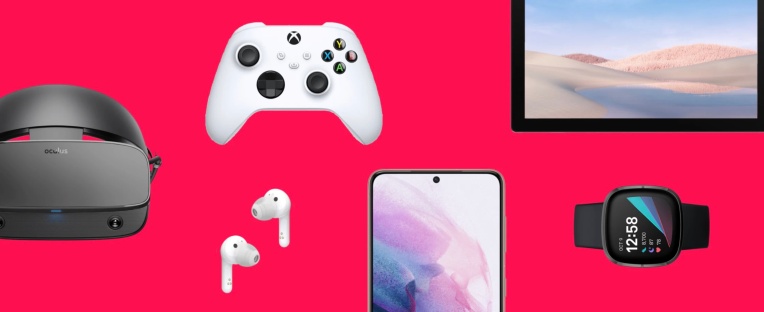A growing number of people are looking for ways to live more sustainably amid increasing concerns over the environment and what we humans keep doing to pollute it. Today, a startup called Grover that has built a business around one aspect of that — enticing people to buy and eventually discard less consumer electronics such as phones, monitors and electric scooters by offering them attractive subscriptions to use their stock of new or used gadgets instead — is announcing a big round of funding to expand its business.
The Berlin-based company has raised $330 million — specifically $110 million in equity and $220 million in debt — money that it plans to use both to expand its stock of devices as it gears up for more user growth; but also build out more tools and financial services to personalize the experience for individuals, and to encourage more business on its platform through schemes like loyalty programs.
Energy Impact Partners is leading the equity portion of the Series C, with Co-Investor Partners, Korelya Capital, LG, Mirae Asset Group; and previous backers Viola Fintech, Assurant and coparion also participating. Fasanara Capital is providing the debt. The mix of debt and equity is typical for a company building, effectively, a leasing business: it is the same approach Grover took when it raised $71 million for its Series B a year ago.
The round values Grover at over $1 billion, the company confirmed.
Grover has been on a steady pace of growth in the last several years — CEO and founder Michael Cassau said that across its footprint of Germany, Austria, The Netherlands, Spain and the U.S., Grover doubled subscriptions and business in the last year, and it currently has half a million items in its catalogue available for subscription, 2 million registered users and 250,000 active customers (some are subscribing to use more than one gadget). That growth has been riding on several concurrent market trends.
The first of these is the push for more sustainability and a new appreciation for the so-called “circular economy” approach — spurred not just by a greater consciousness around environmental issues but a turn towards mutual support around Covid-19, where many people were communicating (sometimes for the first time) with those living close to them, sharing resources to get through the difficulties of the pandemic. Sometimes those resources were used goods being passed on or sold cheaply to others: it opened the door to a different way of thinking for a lot of people.
That collective shift was also pushed along by a second trend, which was a tightening in the global economy, which has compelled consumers to consider spending less on some discretionary items.
“We see ourselves as simplifying access to a part of your budget,” Cassau told TC in an interview.
And the idea of spreading out an expense on a good that may be used but is still in good shape appears to be appealing more now than it might have in the past.
“We see very strong demand for even second or third year products,” Cassau said. “Some want the latest items, and this applies particularly to brand new phones, but a huge body of individuals are happy with an iPhone 11 or even iPhone 10. You’re seeing that also in the secondary market,” he added referring to the likes of Back Market (which itself raised a huge round on a huge valuation earlier this year) where people can acquire refurbished devices. “It’s a huge business, one that is even overtaking primary in some markets.” Cassau said he sees Back Market as a key competitor in its area.
On average a product sees at least four owners over “several years”, but some items are outliers, with a GoPro camera in its stock, it said, circulated 27 times.
Grover got its start with — and still counts — consumers as its primary customers, but it’s also seeing a burgeoning interest in the area of B2B, where some consumers are now also picking up subscriptions for items to use in their business lives, and companies are also starting to engage with Grover to pick up multiple devices to equip their teams, offices, temporary staff and generally as part of a bigger effort to reduce their overheads and fixed costs.
The startup has also been building out a range of what Cassau described to me as “embedded finance” products — financial services it offers alongside its subscription business, which Grover has not built from the ground up but has customized by using fintech APIs built by others.
In its case, it’s been offering users Grover Card, built with Solaris Bank, which people can use as their payment card out in the word, which gives users 3% “cash back”, earning money towards their monthly subscriptions each time they spend money on the card.
Cassau said that the card adoption has had a strong correlation with people taking out more subscriptions with the company, often going from one to three items. Power users on Grover might spend as much as €60 each month on their subscriptions, he added.
Grover has a one year purchase option today, where users can buy an item they’re subscribing to for €1 after that time, and some 10% of its customers opt for that, he said, but most rent, return and exchange for their next items. You can also rent in segments of between 1 and 18 months.
The funding is coming at an interesting time in the venture world: we and others have anecdotally been hearing that funding, especially later-stage and larger deals, has largely dried up in recent months, in part because of the slower rate of public listings and other exits and general caution trickling down over that and other issues like conflict in Europe, with the war in Ukraine and Russia’s actions hanging over us all.
In that context, Cassau said that Grover hadn’t faced challenges in its own efforts to raise money although he could definitely see the “change in the markets starting in January.”
He continued: “I don’t think we have been a boom-and-bust raising kind of company,” he said. “We are naturally developing into this valuation, so we saw less of the effect of that backlash than others might have seen.”
Indeed, one hopes that areas like attention to sustainability and services that are helping ordinary consumers live in a way that respects that concept with less and less friction are not “trends” but are shifts that are here to stay.
“Grover has succeeded in pioneering the subscription economy for consumer electronics, a move that is critically important as we build a net zero world,” said Nazo Moosa, managing partner at Energy Impact Partners, in a statement. “The intersection of society’s linear consumption habits and climate change is an important focus area for EIP’s second fund, which closed at one billion dollars last year. We believe Grover will reinvent society’s relationship with consumer tech, and as a result allow us to continue using the products we need while minimizing harm to our planet. Our investment in Grover is part of a mission to help scale start-ups from all over the world who have the ability to advance the transition to a more sustainable future, and we look forward to working closely with Grover as they move into this next exciting phase.”










